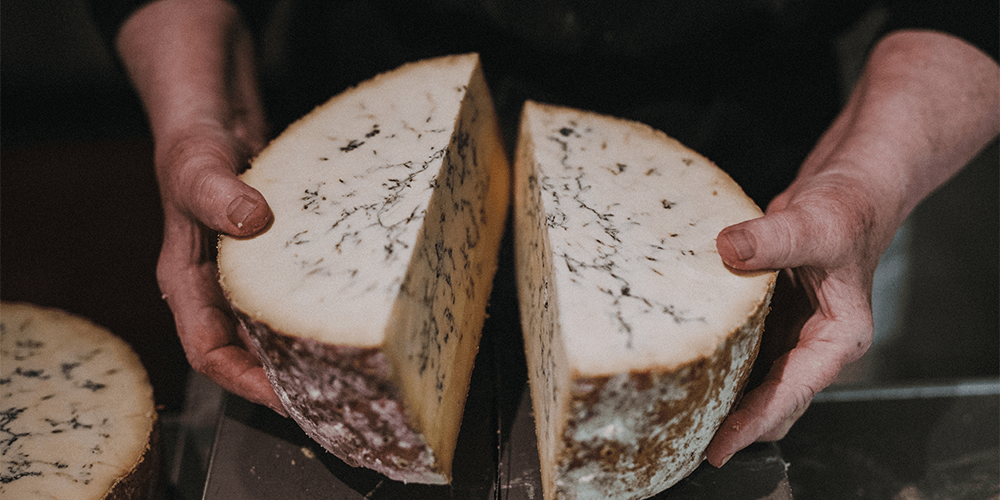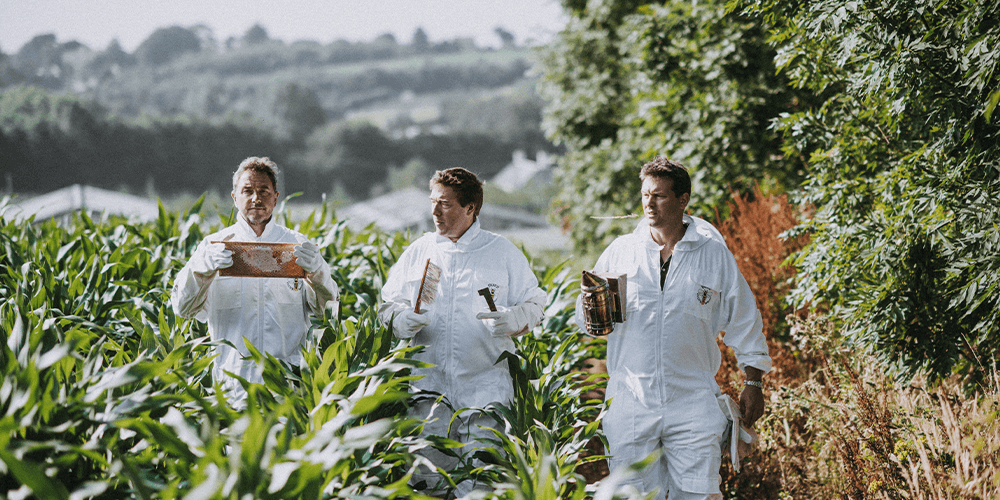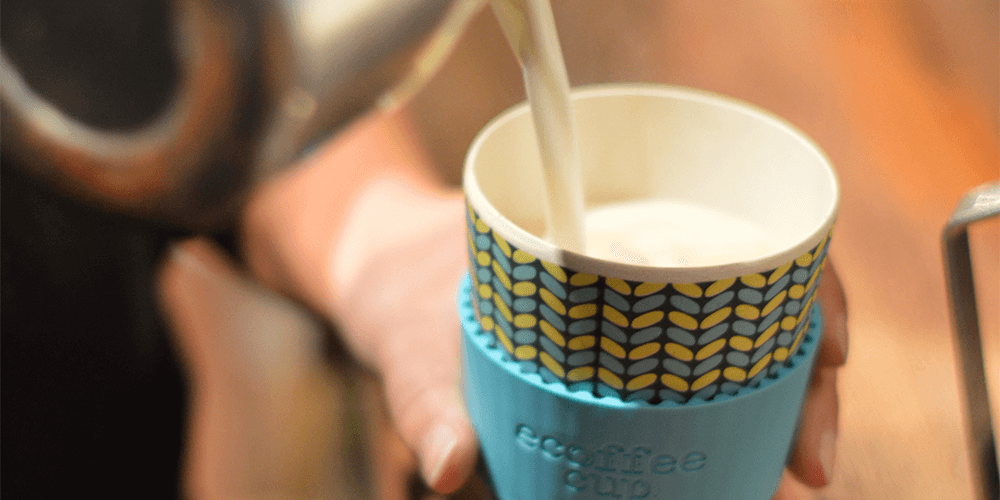Topsham, Devon
EX3 0QH
Tel: 01392 878 200
Email: info@dartsfarm.co.uk
- Gallery
- Love Darts
- Blog & Recipes
- Opening Hours
- Contact Us
- My Account
Darts Farm

RAW MILK CHEESE APPRECIATION DAY
Posted in Food Hall, Food & Drink, Supporting Local on 20 Oct 2020
Raw Milk Revolution
Many of the cheeses we have in our counter are made with Raw Milk, that is milk that hasn’t been pasteurised – a process of heat treating that kills any potential pathogens that may be present in the milk. When making raw milk cheese, meticulous control and expertise is required throughout the entire cheesemaking process, from farming to milking and during the make. For industrial cheesemakers, who take milk from hundreds of farms far and wide, this simply isn’t possible. Firstly because they can’t guarantee the absence of pathogens, but also because they demand a uniform input to their boringly consistent cheese. So, given the extra admin, why bother? Most of the flavour in cheese is determined by the activity of microbes within the milk, the process of pasteurisation also destroys many of the naturally occurring native microbes that are unique to each farm or herd. This means raw milk cheeses have a more diverse set of microbial residents, which in turn can lead to more complex and interesting flavour development as a cheese ages.
Here are four of our favourite raw milk cheeses...
Baron Bigod
The only raw milk Brie de Meaux style cheese in the UK. Johnny insists it’s made using milk that’s still warm, as the process of refrigeration promotes the growth of bacterial strains associated with bitterness.
Sparkenhoe Mature
David and Jo Clarke revived traditional raw milk Red Leicester from 50 years of extinction to create the most amazing nutty, rich and bold territorial classic.
St Jude
Julie Cheyney makes this delicate little cheese, inspired by the French cheese St Marcellin, on the same farm as Baron Bigod. She also uses still warm milk, gravity fed from the parlour.
Stichelton
Technically, Stilton must be made using pasteurised milk. In 2006, Joe Schnieder and Neals Yard Dairy founder Randolph Hodgson said to hell with that and developed the now iconic blue in Welbeck, Nottingham.
Be part of our community
Tags
- Food Hall
- Recipes
- The Farm
- News
- Awards
- Lifestyle
- Fitness & Wellbeing
- Food & Drink
- Seasonality
- Charity
- Supporting Local
- The Fish Shed
- Butchers
- The Flower Shack
- Energy Hair
- Winter Recipe
- Autumn Recipe
- Spring Recipe
- Summer Recipe
- The Farm Table
- July 2017 (1)
- July 2017 (1)
- November 2017 (1)
- December 2017 (1)
- May 2018 (1)
- June 2018 (1)
- July 2018 (1)
- July 2018 (1)
- July 2018 (1)
- August 2018 (1)
- August 2018 (1)
- August 2018 (1)
- August 2018 (1)
- September 2018 (1)
- September 2018 (1)
- September 2018 (1)
- September 2018 (1)
- September 2018 (1)
- October 2018 (1)
- October 2018 (1)
- October 2018 (1)
- November 2018 (1)
- November 2018 (1)
- November 2018 (1)
- December 2018 (1)
- January 2019 (1)
- January 2019 (1)
- February 2019 (1)
- February 2019 (1)
- March 2019 (1)
- March 2019 (1)
- March 2019 (1)
- May 2019 (1)
- May 2019 (1)
- May 2019 (1)
- May 2019 (1)
- May 2019 (1)
- May 2019 (1)
- May 2019 (1)
- May 2019 (1)
- June 2019 (1)
- June 2019 (1)
- June 2019 (1)
- June 2019 (1)
- June 2019 (1)
- June 2019 (1)
- June 2019 (1)
- July 2019 (1)
- July 2019 (1)
- July 2019 (1)
- July 2019 (1)
- July 2019 (1)
- August 2019 (1)
- September 2019 (1)
- September 2019 (1)
- October 2019 (1)
- November 2019 (1)
- November 2019 (1)
- November 2019 (1)
- December 2019 (1)
- December 2019 (1)
- December 2019 (1)
- December 2019 (1)
- December 2019 (1)
- December 2019 (1)
- December 2019 (1)
- December 2019 (1)
- December 2019 (1)
- December 2019 (1)
- December 2019 (1)
- January 2020 (1)
- January 2020 (1)
- January 2020 (1)
- January 2020 (1)
- January 2020 (1)
- January 2020 (1)
- January 2020 (1)
- January 2020 (1)
- January 2020 (1)
- January 2020 (1)
- January 2020 (1)
- January 2020 (1)
- January 2020 (1)
- January 2020 (1)
- January 2020 (1)
- January 2020 (1)
- January 2020 (1)
- January 2020 (1)
- January 2020 (1)
- January 2020 (1)
- January 2020 (1)
- January 2020 (1)
- January 2020 (1)
- February 2020 (1)
- February 2020 (1)
- February 2020 (1)
- February 2020 (1)
- February 2020 (1)
- February 2020 (1)
- February 2020 (1)
- February 2020 (1)
- February 2020 (1)
- February 2020 (1)
- February 2020 (1)
- March 2020 (1)
- March 2020 (1)
- March 2020 (1)
- March 2020 (1)
- March 2020 (1)
- March 2020 (1)
- April 2020 (1)
- April 2020 (1)
- April 2020 (1)
- April 2020 (1)
- April 2020 (1)
- April 2020 (1)
- April 2020 (1)
- April 2020 (1)
- April 2020 (1)
- April 2020 (1)
- April 2020 (1)
- April 2020 (1)
- May 2020 (1)
- May 2020 (1)
- May 2020 (1)
- May 2020 (1)
- May 2020 (1)
- May 2020 (1)
- May 2020 (1)
- June 2020 (1)
- June 2020 (1)
- June 2020 (1)
- June 2020 (1)
- June 2020 (1)
- June 2020 (1)
- June 2020 (1)
- June 2020 (1)
- July 2020 (1)
- July 2020 (1)
- July 2020 (1)
- July 2020 (1)
- July 2020 (1)
- July 2020 (1)
- August 2020 (1)
- August 2020 (1)
- August 2020 (1)
- August 2020 (1)
- August 2020 (1)
- August 2020 (1)
- August 2020 (1)
- September 2020 (1)
- September 2020 (1)
- September 2020 (1)
- September 2020 (1)
- September 2020 (1)
- September 2020 (1)
- September 2020 (1)
- October 2020 (1)
- October 2020 (1)
- October 2020 (1)
- October 2020 (1)
- October 2020 (1)
- November 2020 (1)
- November 2020 (1)
- December 2020 (1)
- December 2020 (1)
- December 2020 (1)
- January 2021 (1)
- January 2021 (1)
- January 2021 (1)
- January 2021 (1)
- February 2021 (1)
- February 2021 (1)
- March 2021 (1)
- April 2021 (1)
- April 2021 (1)
- May 2021 (1)
- May 2021 (1)
- May 2021 (1)
- May 2021 (1)
- May 2021 (1)
- June 2021 (1)
- June 2021 (1)
- June 2021 (1)
- June 2021 (1)
- July 2021 (1)
- July 2021 (1)
- July 2021 (1)
- July 2021 (1)
- July 2021 (1)
- August 2021 (1)
- August 2021 (1)
- August 2021 (1)
- August 2021 (1)
- August 2021 (1)
- September 2021 (1)
- September 2021 (1)
- September 2021 (1)
- September 2021 (1)
- October 2021 (1)
- October 2021 (1)
- December 2021 (1)
- December 2021 (1)
- December 2021 (1)
- January 2022 (1)
- January 2022 (1)
- January 2022 (1)
- January 2022 (1)
- February 2022 (1)
- February 2022 (1)
- February 2022 (1)
- February 2022 (1)
- February 2022 (1)
- February 2022 (1)
- February 2022 (1)
- February 2022 (1)
- February 2022 (1)
- February 2022 (1)
- March 2022 (1)
- March 2022 (1)
- March 2022 (1)
- April 2022 (1)
- April 2022 (1)
- May 2022 (1)
- May 2022 (3)
- May 2022 (1)
- May 2022 (1)
- May 2022 (1)
- May 2022 (1)
- May 2022 (1)
- June 2022 (1)
- July 2022 (1)
- July 2022 (1)
- August 2022 (1)
- August 2022 (1)
- September 2022 (1)
- September 2022 (1)
- September 2022 (1)
- September 2022 (1)
- September 2022 (1)
- September 2022 (1)
- October 2022 (1)
- October 2022 (1)
- October 2022 (1)
- October 2022 (1)
- October 2022 (1)
- October 2022 (1)
- October 2022 (1)
- November 2022 (1)
- November 2022 (1)
- November 2022 (1)
- November 2022 (1)
- December 2022 (1)
- December 2022 (1)
- December 2022 (1)
- December 2022 (1)
- December 2022 (1)
- December 2022 (1)
- January 2023 (1)
- January 2023 (1)
- January 2023 (1)
- February 2023 (1)
- February 2023 (1)
- March 2023 (1)
- April 2023 (1)
- April 2023 (1)
- April 2023 (1)
- April 2023 (1)
- April 2023 (1)
- April 2023 (1)
- April 2023 (1)
- April 2023 (1)
- May 2023 (1)
- May 2023 (1)
- May 2023 (1)
- May 2023 (1)
- June 2023 (1)
- June 2023 (1)
- June 2023 (1)
- June 2023 (1)
- June 2023 (1)
- July 2023 (1)
- July 2023 (1)
- July 2023 (1)
- August 2023 (1)
- August 2023 (1)
- August 2023 (1)
- August 2023 (1)
- August 2023 (1)
- September 2023 (1)
- September 2023 (1)
- October 2023 (1)
- October 2023 (1)
- October 2023 (1)
- November 2023 (1)
- November 2023 (1)
- November 2023 (1)
- November 2023 (1)
- November 2023 (1)
- December 2023 (1)
- December 2023 (1)
- December 2023 (1)
- December 2023 (1)
- January 2024 (1)
- January 2024 (1)
- January 2024 (1)
- January 2024 (1)
- January 2024 (1)
- January 2024 (1)
- January 2024 (1)
- February 2024 (1)
- February 2024 (1)
- February 2024 (1)
- February 2024 (1)
- February 2024 (1)
- February 2024 (1)
- March 2024 (1)
- March 2024 (1)
- March 2024 (1)
- March 2024 (1)
- March 2024 (1)
- March 2024 (1)
- April 2024 (1)
- April 2024 (1)
- April 2024 (1)
- April 2024 (1)
- April 2024 (1)
- May 2024 (1)
- May 2024 (1)
- June 2024 (1)
- July 2024 (1)
- July 2024 (1)
- July 2024 (1)
- July 2024 (1)
- July 2024 (1)
- August 2024 (1)
- August 2024 (1)
- September 2024 (1)
- October 2024 (1)
- December 2024 (1)
- December 2024 (1)
- December 2024 (1)
- December 2024 (1)
- December 2024 (1)
- December 2024 (1)
- December 2024 (1)
- January 2025 (1)
- January 2025 (1)
- January 2025 (1)
- February 2025 (1)
- February 2025 (1)
- February 2025 (1)
- February 2025 (1)
- March 2025 (1)
- March 2025 (1)
- March 2025 (1)
- March 2025 (1)
- March 2025 (1)
- March 2025 (1)
Related blog posts

Raw Honey now available!
A super exciting announcement!

Calling all Reusers and Recyclers
We love reducing, reusing and recycling!
